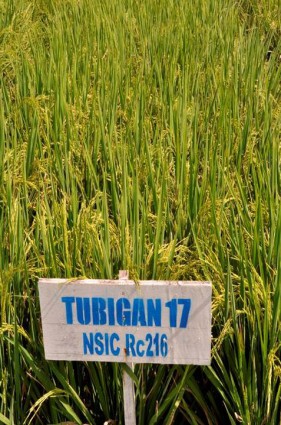Rice varieties (such as NSIC Rc 216, Rc 160, and Rc 300) bred by the Philippine Rice Research Institute (PhilRice) and Rc 222 produced by the International Rice Research Institute (IRRI) were the top four most preferred rice varieties of Filipino farmers in irrigated lowland fields nationwide, both for dry and wet seasons.
“These pool of inbred rice varieties were previously tested for biotic and abiotic stresses to ensure that these can adapt to the current conditions of the climate and the environment, which the breeders and the rice farmers have been dealing with,” says Thelma Padolina, PhilRice senior plant breeder.
These selected popular rice varieties were the results of farmers’ participatory trials under the Accelerating the development and adoption of next-generation rice varieties for major ecosystems in the Philippines, known as the Next-Gen project.
Aside from the Next-Gen data, the other bases for the identified top varieties are the: National Cooperative Test results, production data based on the seed system workshop, farmers’ preferences based on the report of the regional seed coordinators, and value chain analysis survey.
Rc 216, also known as Tubigan 17, when transplanted, has a maximum yield of 9.7 t/ha with a maturity of 112 days after sowing (DAS). It is moderately resistant to brown planthoppers (BPH) and green leafhoppers (GLH).
Rc 160, on the other hand, has a maximum yield of 8.2 t/ha if direct-wet-seeded and matures in 107 DAS. It has intermediate reaction to blast, bacterial leaf blight (BLB) and GLH, and is resistant to stem borer. This variety is also known for its good eating quality because of its low amylose content.
Transplanting Rc 300 or Tubigan 24 could yield as high as 10.4 t/ha and matures in 115 DAS. It is moderately resistant to both BPH and GLH, and has intermediate reaction to BLB.
Rc 222, known as Tubigan 18, that has a maximum yield of 10 t/ha matures in 114 DAS. It is moderately resistant to BPH, GLH, and stem borers.
“Performance of these inbred rice varieties is evaluated based on their stability across seasons and locations. While we have these at hand, breeding institutions will still continue to breed new varieties to help farmers adapt to their changing farm conditions,” Padolina noted.





